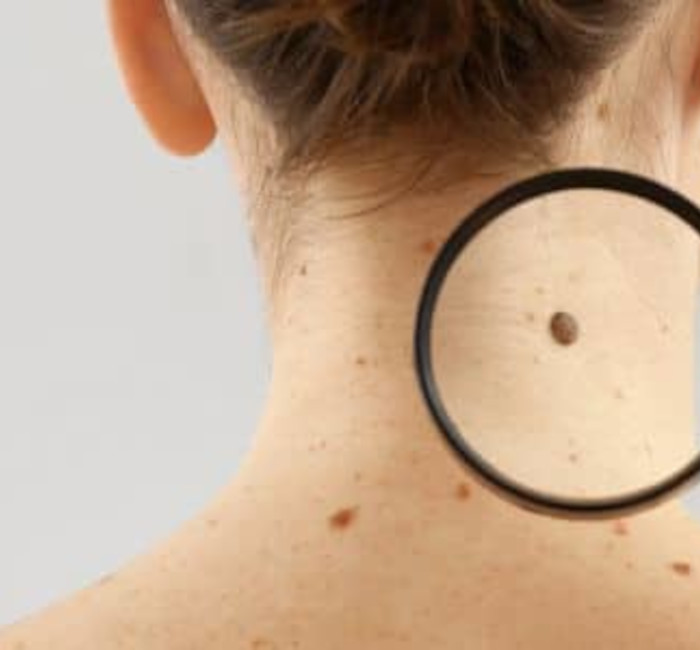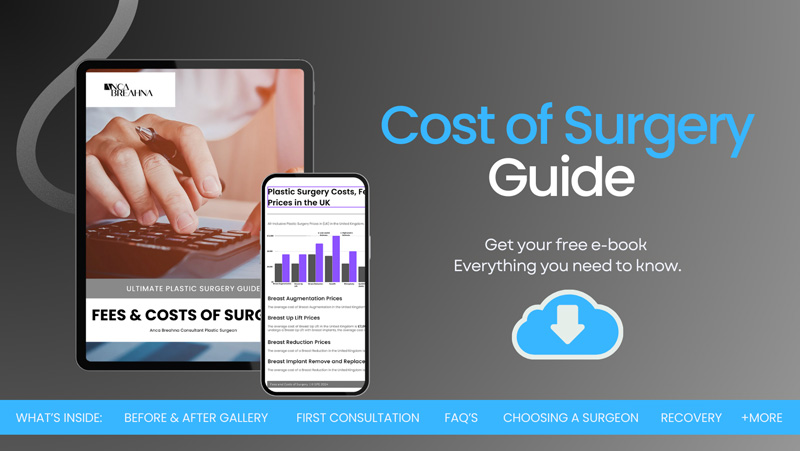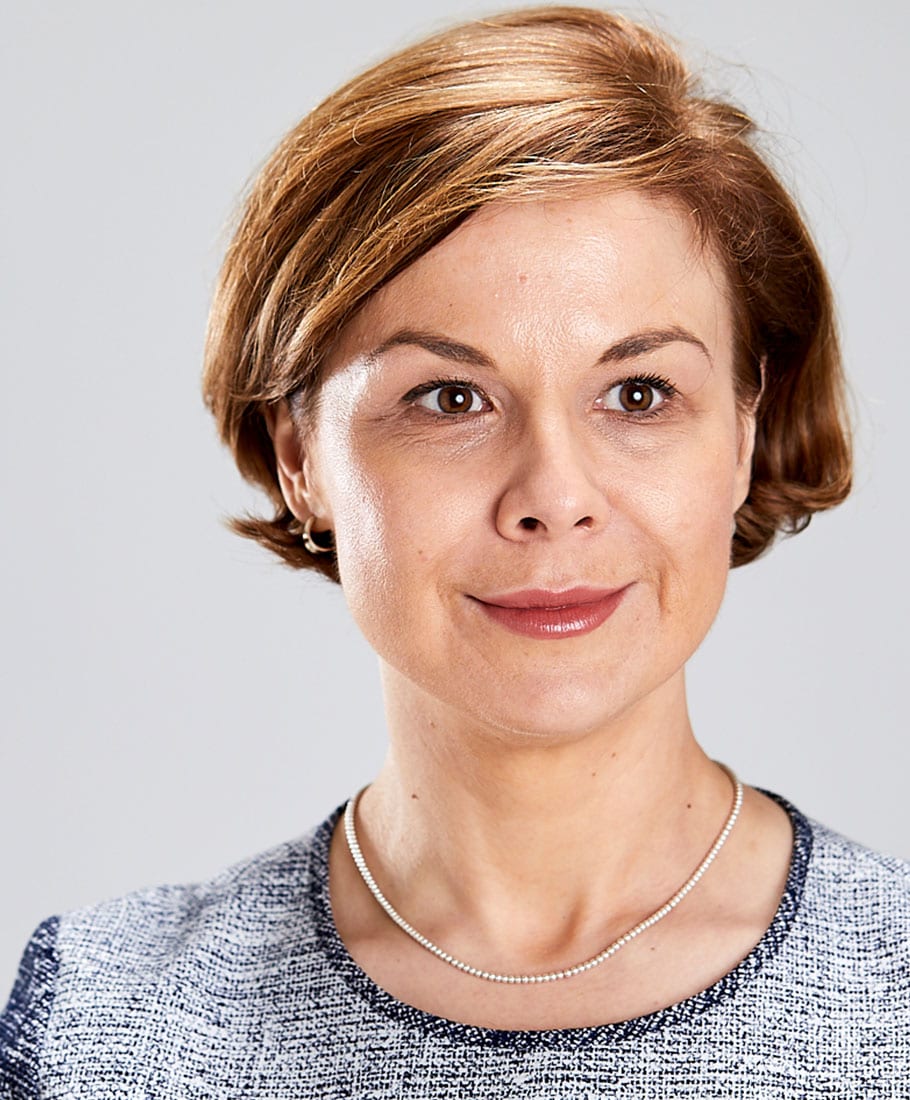Procedures
Skin Lesion Excision

If you’ve noticed an unusual growth or mark on your skin, it’s natural to feel a bit concerned. Skin lesions come in various forms—moles, warts, skin tags, and other growths—and can be benign or malignant. This process is not only used for cosmetic enhancement but also for the diagnostic and therapeutic removal of potentially harmful growths
Most commonly, people seek skin lesion excision for lesions that are aesthetically displeasing or physically irritating. However, it’s also a proactive measure against skin abnormalities that show signs of malignancy, such as a change in colour, shape, or size, which could indicate skin cancer. The decision to remove a skin lesion surgically is typically guided by Consultant Plastic Surgeon Anca Breahna, who can identify the nature of the lesion and advise on the best course of action.
At a glance
Depends on the type of procedure perfomed
Local anaesthesia
A few days
Table of Contents
What is Skin Lesion Excision?
Skin lesion excision is a precise surgical technique used to remove unwanted or harmful lesions from the skin. This term broadly includes any abnormality on the skin, including moles, cysts, warts, and skin tags, as well as more serious concerns like precancerous and cancerous growths. The primary goal of excision is to completely remove the lesion, thereby improving your skin’s appearance and, more importantly, eliminating any lesions that might pose a health risk.
The procedure usually involves numbing the area around the lesion with a local anaesthetic, ensuring that you are comfortable and pain-free Anca then uses specialised tools to remove the lesion, along with a margin of tissue around it. This margin is crucial for ensuring that all potentially malignant cells are removed, significantly reducing the risk of cancer spreading.
Following the removal, the excised tissue is usually sent to a pathology lab to confirm the nature of the lesion. This examination helps determine if the lesion was benign or if further treatment may be necessary, providing peace of mind and aiding in effective health management. The results can influence follow-up care, including additional treatments or adjustments in health monitoring.
The excision not only serves aesthetic and comfort purposes by removing irritating or unsightly lesions but also plays a role in cancer prevention and health assurance. By choosing to undergo a skin lesion excision, you’re taking a proactive step towards maintaining your health and ensuring any potential skin abnormalities are addressed promptly and effectively.
Who Needs Skin Lesion Excision?
Skin lesion excision is not necessarily for everyone. Usually, this procedure is recommended for people who have skin lesions that might be malignant (cancerous) or those that pose potential health risks or discomfort. Finding out whether you’re a suitable candidate for skin lesion excision largely depends on the nature and behaviour of the skin lesion in question. Here are some factors that might make you consider or necessitate this surgical option:
- Changing Lesions: If you have a lesion that has changed in size, shape, or colour, it’s important to consult with a doctor. These changes can be signs of skin cancer, and early excision of these lesions can prevent the spread of malignant cells.
- Symptomatic Lesions: Lesions that cause physical discomfort or interfere with daily activities might require removal. For example, lesions that are repeatedly irritated by clothing or those that bleed easily could be suitable for excision to provide relief and prevent further complications.
- Cosmetic Concerns: For many, the presence of benign lesions like moles or skin tags in highly visible areas such as the face or neck can be distressing. In these cases, excision can help improve the appearance of the skin and boost your comfort with your appearance.
- Preventive Measures: People with a family history of skin cancer or those who have previously had skin cancer might be more proactive about having lesions removed, especially if they appear suspicious.
It’s important to have an initial assessment with Anca who can evaluate the lesion and discuss potential risks and benefits of removal. This evaluation includes a thorough examination and possibly a biopsy to determine the nature of the lesion. Anca will recommend excision if the benefits of removing the lesion outweigh the risks associated with the surgical procedure.
Moreover, skin lesion excision might be suggested as part of a broader skin cancer prevention or treatment strategy. In cases where there is a history of multiple or severe sunburns, or extensive exposure to UV radiation, regular checks for suspicious lesions and timely excision might be integrated into your health care plan.
Benefits of the Skin Lesion Excision Procedure
Opting for skin lesion excision can bring numerous benefits, significantly impacting your quality of life and health. Here are some of the benefits that underscore the importance of this procedure:
- Health Assurance: The foremost benefit is the removal of potentially cancerous lesions, reducing the risk of skin cancer spreading. This proactive measure is essential in maintaining good health and ensuring peace of mind.
- Symptom Relief: Lesions that are painful, prone to bleeding, or cause other symptoms can be effectively and permanently treated through excision. This not only alleviates physical discomfort but also prevents the symptoms from recurring.
- Improved Appearance: Cosmetic improvement is a significant benefit for many who undergo lesion excision. Removing unsightly lesions can enhance your skin’s appearance, leading to improved satisfaction with your look and possibly boosting your social confidence.
- Diagnostic Clarity: Once a lesion is removed, it can be examined more closely in a lab. This examination can provide valuable insights into the nature of the lesion, ensuring that any precancerous or cancerous cells are identified and treated accordingly.
Types of Skin Lesion Excision Procedures
Shave Excision
Ideal for raised lesions that protrude above the skin’s surface, such as moles or skin tags. During a shave excision, Anca uses a sharp blade to shave off the lesion flush with the surrounding skin or slightly below it. This method is quick and usually leaves a minimal scar. It is particularly effective for lesions that are benign and not suspected of being cancerous.
Punch Excision
This technique is used primarily for small, circular lesions. A punch tool, which is a circular blade, is used to “punch out” a cylindrical piece of skin that includes the lesion and a small margin of normal skin. This method is often employed when a full-thickness skin sample is needed for diagnostic purposes, such as confirming whether a lesion is malignant. The wound is usually closed with sutures, leaving a small, round scar.
Scalpel Excision
This is the traditional method for removing larger or irregularly shaped lesions. Anca uses a scalpel to cut around and under the lesion, removing it along with a margin of healthy tissue to ensure complete excision, particularly if there is a suspicion of cancer. This method often requires stitches and may result in a more noticeable scar, depending on the lesion’s size and location.
Laser Excision
In some cases, laser technology may be used to remove superficial lesions with precision. This method can be particularly useful for cosmetic reasons as it minimises scarring and is effective on lesions located on sensitive areas like the face.
How Is the Skin Lesion Excision Procedure Performed?
Skin lesion excision is performed as an outpatient procedure, meaning you can go home the same day. The specific steps involved may vary depending on the type of excision method used but generally follow this process:
- Preparation: Before the procedure, the area around the lesion is cleaned and sterilised to prevent infection. Anca will then administer a local anaesthetic to numb the area, ensuring you do not feel pain during the excision.
- Excision: Using the chosen method (shave, punch, scalpel, or laser), Anca carefully removes the lesion along with any necessary margin of surrounding tissue. The goal is to remove the entire lesion while minimising damage to the surrounding skin.
- Closure and Dressing: Once the lesion is removed, Anca may close the incision with stitches, particularly if a scalpel excision was performed. Some methods, like shave excision, might not require stitches. After closing the wound, a sterile dressing is applied to protect the area and promote healing.
- Post-Procedure Care: Before you leave, you’ll receive instructions on how to care for the wound at home. This might include keeping the area clean and dry, applying ointment, and changing dressings.
- Follow-Up: You will have a follow-up appointment to check on the healing process, remove stitches if necessary, and discuss the results of any pathological examination. This follow-up is important to ensure that the lesion has been completely removed and to address any further care needed.
The excision procedure is generally safe, with a low risk of complications. However, like all surgical procedures, there is a risk of infection, bleeding, or scarring. Discussing these risks with Anca will help you understand the safety measures in place to minimise them.
When it comes to removing skin lesions, there are several techniques available, each suited to different types of lesions and specific medical or cosmetic needs. Each of these methods has its indications, benefits, and risks, which Anca will discuss with you based on the lesion’s type, size, location, and whether a biopsy has indicated a risk of malignancy. Choosing the right type of excision can significantly affect the procedure’s outcome, both in terms of health and cosmetic results.
Recovery after Skin Lesion Excision Procedure
Recovering from a skin lesion excision is straightforward, but it does vary slightly depending on the size of the lesion removed, the method used, and your overall health. Here are some general guidelines and what you can expect during the recovery period:
- Immediate Aftercare: Post-procedure, it’s important to keep the area clean and dry to prevent infection. You will have a dressing over the site, which needs to be kept in place as instructed by Anca. Some swelling, redness, or minor pain may occur, which is normal and can be managed with over-the-counter pain relievers.
- Wound Care: You will receive specific instructions on how to care for the wound. This may include cleaning the area gently with soap and water and applying topical antibiotic ointment if prescribed. It’s important to follow these instructions carefully to ensure proper healing.
- Activity Restrictions: You might need to avoid strenuous activities and direct sunlight on the excision site for a period. Sun exposure can cause darkening of the scar, so protecting the area with sunscreen or clothing is recommended when you go outdoors.
- Monitoring for Complications: Keep an eye on the site for signs of infection such as increased redness, swelling, pus, or if you develop a fever. Contact Anca immediately if you notice any of these symptoms.
- Follow-up Visits: Depending on the method of excision and the type of stitches used, you may need to return to Anca to have stitches removed, usually within one to two weeks after the procedure. This visit is also an opportunity to discuss the pathology report from the excised tissue and any further treatment needed.
- Scar Management: Some form of scarring may occur after the excision. The appearance of scars improves over time. Anca might recommend scar treatment options such as silicone sheets, scar creams, or, in some cases, further cosmetic procedures if the scar is prominent.
Reviews
Patient satisfaction is the top priority for Anca. You can find how patients feel about her work below.
Wish I’d Done It Sooner! I am so pleased with the results
After searching and deliberating for a long time, I consulted Anca regarding the removal of 3 lipomas. From start to finish, she was fantastic! One of the lipomas was on my forehead and I have to search for the scar! I am so pleased with the results of all and the one regret is that I didn’t find her sooner. I wouldn’t hesitate to recommend her

Miss Breahna removed a cancerous nodule from my forehead in March 2021. I was quite nervous when I arrived at the hospital, but when I was greeted by a member of her team I started to feel calmer as they were so professional and friendly.Once inside the theatre Miss Breahna and her team helped me to feel relaxed and comfortable throughout, the team atmosphere was friendly and upbeat during my operation and I was looked after wonderfully. I would recommend Miss Breahna and her team to anyone requiring this type of surgery.Kate Hodson
How Much is Skin Lesion Excision in the UK?
The cost of skin lesion excision can vary widely based on different factors, including the type of lesion, the complexity of the removal, the location of the clinic or hospital, and whether the procedure is covered by your insurance.
- Procedure Costs: Simple excisions using methods like shave or punch biopsies may cost less, ranging from a few hundred to several hundred pounds. More complex excisions requiring detailed surgical intervention, especially those done in a hospital setting under general anaesthesia, can be significantly more expensive.
- Diagnostic Costs: Part of the cost can include the pathological analysis of the lesion. This is an important aspect of the procedure, as it confirms whether all of the abnormal tissue has been removed and whether the lesion was benign or malignant.
- Insurance Coverage: Many health insurance plans cover skin lesion excision if it’s deemed medically necessary, which is often the case for lesions suspected of being cancerous. Cosmetic removals, however, may not be covered. It’s important to check with your insurance provider about what is included in your coverage and any potential out-of-pocket costs.
- Additional Expenses: Additional costs may include follow-up visits, prescription medications for pain or infection control, and any necessary treatments for scar management.
Cost of Surgery Guide

Further Reading
- Read Anca’s Blog on How to Get Rid of Moles
- Read Anca’s Blog on Treatment Options for Lipoma and Other Swellings
- Read Anca’s Blog on Treatment for Nerve Lacerations and Trauma

Procedure
Frequently asked questions
What are the risks associated with skin lesion excision?
While skin lesion excision is a safe procedure, like any surgical intervention, it does carry some potential risks. These include infection, bleeding, and scarring at the excision site. There’s also a small chance that the lesion may recur if not completely removed. In rare cases, nerve damage or an allergic reaction to the anaesthetic can occur. Discussing these risks with Anca prior to the procedure can help you understand how they apply to your specific situation and what steps will be taken to minimise them.
How do I know if I need a skin lesion excision?
Determining whether you need a skin lesion excision typically involves a consultation with a plastic surgeon. Indicators for excision include lesions that have changed in size, shape, or colour; lesions that cause pain, itching, or bleeding; or those that are cosmetically unappealing to you. Your doctor may also recommend excision if there is any suspicion of malignancy based on a biopsy or clinical examination.
Will I have a scar after skin lesion excision?
Yes, some form of scarring is likely after skin lesion excision, but the extent depends on the size of the lesion, the method of removal, and your skin type. Techniques like punch and scalpel excisions are more likely to leave a small scar compared to shave excision. Anca will employ techniques to minimise scarring, and post-operative care, such as using silicone sheets or scar reduction creams, can further help manage and reduce scar visibility.
How long does recovery from a skin lesion excision take?
Recovery time can vary depending on the size and location of the lesion removed, as well as the excision method used. Generally, the surgical site heals within a few weeks. Stitches, if used, are usually removed within one to two weeks after the procedure. However, it’s important to follow Anca’s specific aftercare instructions to ensure optimal healing and to monitor the site for any signs of infection or complications.
Medical References about Skin Lesion Removal
- Skin Lesions – Cleveland Clinic
- Dermatology – Excision of Skin Lesion – NHS
- Skin lesions: Types and When to See a Doctor – Medical News Today
- Skin Lesion Removal – MedlinePlus
 Ms Anca Breahna, PhD, MSc, FEBOPRAS, FRCS (Plast) is a highly regarded Consultant Plastic Surgeon specialising in the field of Aesthetic and Reconstructive Plastic Surgery. Anca performs a range of
Ms Anca Breahna, PhD, MSc, FEBOPRAS, FRCS (Plast) is a highly regarded Consultant Plastic Surgeon specialising in the field of Aesthetic and Reconstructive Plastic Surgery. Anca performs a range of 